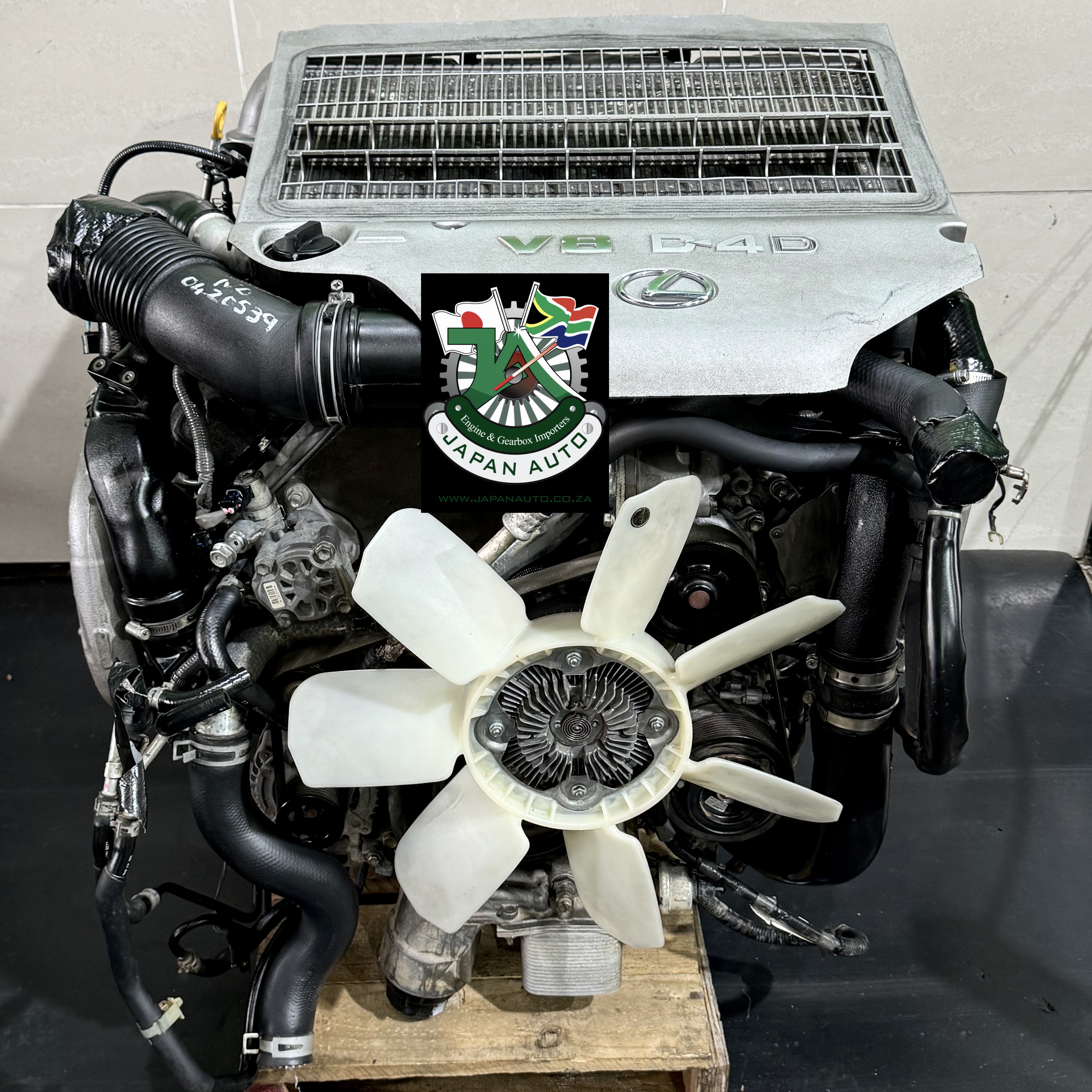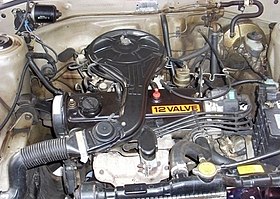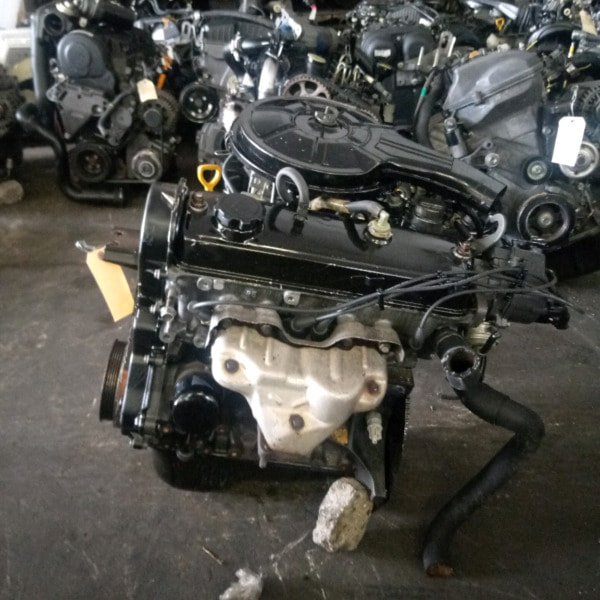How the Toyota Tazz Became a Staple in the Compact Car Market
How the Toyota Tazz Became a Staple in the Compact Car Market
Blog Article
Discover the current Patterns in Engine Innovation With Tazz
In the swiftly progressing landscape of vehicle technology, Tazz stands at the forefront, highlighting substantial improvements in engine systems that prioritize both innovation and sustainability. From crossbreed engines that enhance fuel efficiency to the appearance of hydrogen fuel cells, the trends forming contemporary powertrains are not just improving performance yet likewise addressing essential ecological challenges.
Crossbreed Engine Innovations
Hybrid engine innovations stand for a pivotal change in automobile technology, integrating the benefits of interior combustion engines with electrical propulsion systems. This integration not just enhances fuel performance yet also minimizes discharges, conference increasingly strict environmental policies. By making use of both power resources, hybrid engines can maximize performance, providing power when required while saving fuel throughout much less requiring driving conditions.
Current developments in crossbreed innovation include improvements in battery performance and regenerative stopping systems. These innovations permit greater power healing during slowdown, which can be redirected to assist in acceleration or power auxiliary systems. Makers are concentrating on portable layouts and lightweight products to make the most of the effectiveness of hybrid powertrains.
The growth of plug-in hybrids has additionally expanded the market, making it possible for drivers to charge their vehicles utilizing basic electric outlets. This function often permits substantial all-electric array, further decreasing dependence on conventional fuels. tazz. As the automotive industry continues to evolve, hybrid engine technologies are anticipated to play an essential role in bridging the void in between standard automobiles and completely electric models, providing a transitional solution that satisfies varied customer requirements and preferences
Advancements in Electric Powertrains
The automotive landscape is swiftly advancing, with electrical powertrains emerging as a leading pressure in lasting transportation. Advances in electrical automobile (EV) modern technology are considerably enhancing performance, individual, and performance experience. Key technologies include improvements in battery chemistry, which have actually enhanced power density, lowered charging times, and extended general battery life.
Solid-state batteries, as an example, assure to transform the marketplace by offering better security and performance compared to typical lithium-ion cells. Improvements in regenerative stopping systems are enabling automobiles to recover energy throughout deceleration, contributing to general efficiency.
In addition to battery modern technology, electrical motor designs are ending up being extra sophisticated. Advancements such as incorporated electric motors and advanced thermal administration systems are assisting to maximize power distribution and reduce weight, eventually improving lorry dynamics.

Jointly, these developments highlight the commitment to transition towards cleaner, more reliable transport options, placing electric powertrains at the forefront of automotive technology.
The Surge of Hydrogen Gas Cells
Progressively, hydrogen fuel cells are obtaining grip as a feasible alternative to traditional inner burning engines and battery electric vehicles. This modern technology uses the chemical energy stored in hydrogen, transforming it into electrical power through an electrochemical response with oxygen. The primary byproduct of this procedure is water, making hydrogen fuel cells an eco-friendly option with absolutely no discharges at the tailpipe.

Car manufacturers are increasingly investing in hydrogen fuel cell innovation, identifying its possibility for long-range applications and rapid refueling abilities that equal conventional fuels. Furthermore, markets such as durable transport and public transportation are especially well-suited for hydrogen gas cells, where battery electrical remedies might drop short as a result of weight and range limitations.
As research and investment continue to expand, hydrogen fuel cells are poised to play a significant role in the future landscape of clean transportation and power see page remedies.
Enhancements in Internal Burning Engines
Innovations in inner burning engine (ICE) modern technology are transforming traditional vehicles to fulfill modern-day ecological criteria and efficiency expectations. One of one of the most substantial improvements includes the combination of advanced fuel shot systems. These systems enhance the air-fuel blend, enhancing combustion performance and causing minimized discharges. Direct gas shot, for example, enables far better atomization of gas, resulting in more full combustion and enhanced power result.
Additionally, turbocharging has actually gained prestige, enabling smaller sized engines to provide greater performance without the weight of bigger engines - tazz. This technology not just increases performance however additionally adds to decrease fuel usage. Variable valve timing systems are likewise being improved, allowing engines to adjust to various driving problems for improved torque and responsiveness
Additionally, you can try this out using lightweight products in engine building is ending up being standard, additional boosting fuel effectiveness by lowering overall automobile weight. Engine control units (ECUs) are progressively innovative, enabling real-time modifications that maximize efficiency and emissions.
These enhancements jointly indicate a critical shift in ICE modern technology, aligning with global sustainability goals while still supplying the efficiency drivers get out of their automobiles. As the sector advances, these improvements remain to shape the future of standard vehicle design.
Future Fads in Engine Efficiency
Significant developments in engine effectiveness are expected as makers concentrate on incorporating sophisticated modern technologies to meet stringent environmental regulations and consumer demands. The shift in the direction of electrification, crossbreed systems, and different gas is improving the auto landscape, driving advancements that improve gas economic climate and minimize discharges.
One of the essential trends is the implementation of advanced materials and making strategies. High-strength alloys and lightweight composites add to lowered lorry weight, therefore enhancing overall efficiency. In addition, the fostering of turbocharging and variable valve timing technologies enables boosted power outcome from smaller engines, further boosting gas economic climate.

Final Thought
Innovations in hybrid engine systems, electric powertrains, and hydrogen fuel cells show a dedication to lowering emissions while enhancing performance. Enhancements in interior burning engines and an emphasis on light-weight products add to total engine performance.
From crossbreed engines that optimize gas efficiency to the emergence of hydrogen fuel cells, the trends shaping modern powertrains are not only enhancing performance but also dealing with vital environmental difficulties.Hybrid engine developments represent a critical shift in automotive technology, combining the advantages of inner burning engines with electrical propulsion systems.Furthermore, turbocharging has gained prominence, permitting smaller sized engines to provide higher performance without the weight of bigger engines. In addition, the fostering of turbocharging and variable valve timing technologies allows for boosted power result from smaller sized engines, additionally enhancing gas economic situation.
Renovations in interior combustion engines and an emphasis on light-weight materials add to general engine effectiveness.
Report this page